At the recently concluded 46th Society for News Design (SND) Creative Competition, the South China Morning Post (SCMP) earned an impressive 94 awards, reinforcing its standing as a global leader in visual journalism.In this exclusive conversation with TK Sajeev, Editorial Director of newspaperdesign.org, Marcelo Duhalde, SCMP’s Head of Graphics and Visual Stories, discusses the strategy, creativity, and teamwork behind the team’s award-winning work.

Marcelo Duhalde
Congratulations on winning 94 awards in the 46th SND Design Competition! What does this recognition mean for the SCMP team?
Thank you—it’s a tremendous achievement for our small team this year.
Can you share some insights into the key projects or stories that earned the most recognition in this year’s competition?
In the stories where we saw potential, we tried to focus on the human dimension—the individual navigating a broader context. The most awarded pieces explored situations where people were pushed to their limits, such as Helpers’ Bedtime Stories and Ukraine Trenches. These are narratives of hardship that deeply affect the mental and physical health of those involved.
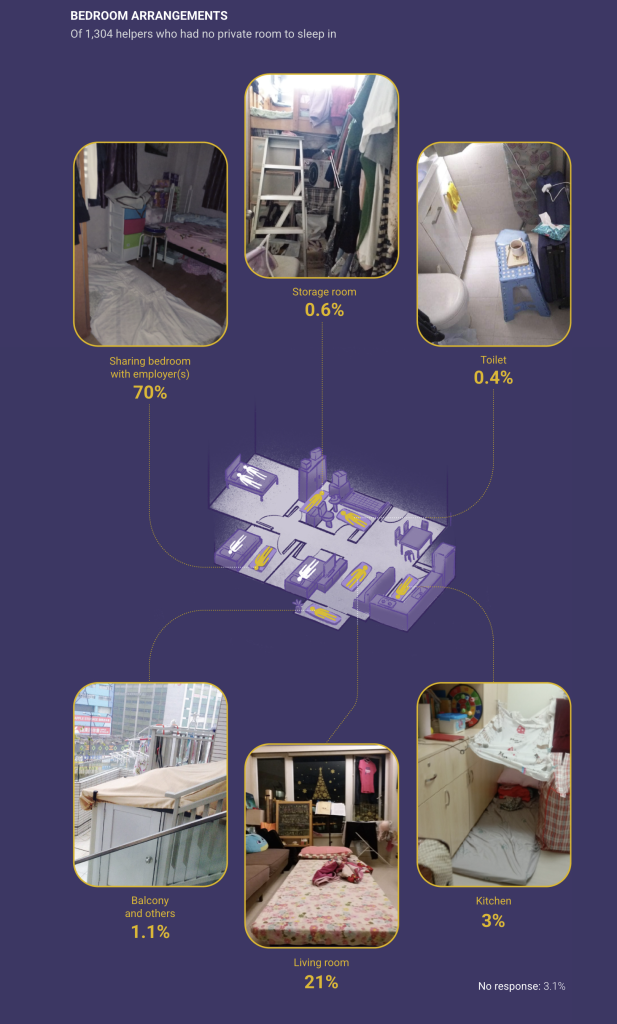

Our storytelling centers on the human experience. That’s why the team gathers every detail meticulously—through interviews, recordings, images, videos, and on-site visits where possible. Visual storytelling research demands speed and clarity when sketching ideas, and it’s vital to involve the subject during their testimony. With strong references, it becomes much easier to reconstruct the environments where these stories unfold.
So how do we visually represent such suffering and immerse the audience in these realities? After extensive investigation, we invest our time in sketching and testing to create the most effective visual representations. This approach serves two purposes: it first captivates the audience with a compelling illustration, and then immediately conveys the emotional and physical context of the human experience. This instant connection is crucial for narrative flow.
Helpers’ Bedtime Stories
What design principles or editorial values guide your team’s approach to visual storytelling?
Our core principle is neutrality. We don’t present personal opinions or preferences—only verifiable facts of public interest, as any responsible visual journalism team should.
In terms of design, I remind the team that simplicity is powerful. A strong visual story should speak for itself without needing detailed instructions. That’s our daily challenge: visual efficiency.
We embrace a broad range of illustration and design styles, with some guiding characteristics:
- We use 3D modeling tools mainly for reference; we rarely publish rendered 3D visuals because they can feel cold and less engaging.
- We avoid overly technical explanations. If technical details are necessary, we rethink the storytelling approach to find alternative, more accessible paths.
- Our aim is not to create encyclopedic works or design pieces for academic audiences. We want to make high-quality, understandable content for a wide readership.
We encourage our illustrators to express their individual creativity. Each member has a unique way of interpreting the news. Instead of enforcing a rigid style, we use basic, practical templates that streamline development.
As Head of Graphics and Visual Stories, I prioritize collaboration, shared responsibility, and sound judgment. Individuals who prefer to work in isolation often struggle with our team’s approach. We believe that great work is best achieved through collaborative ideation and execution, within reasonable timelines.
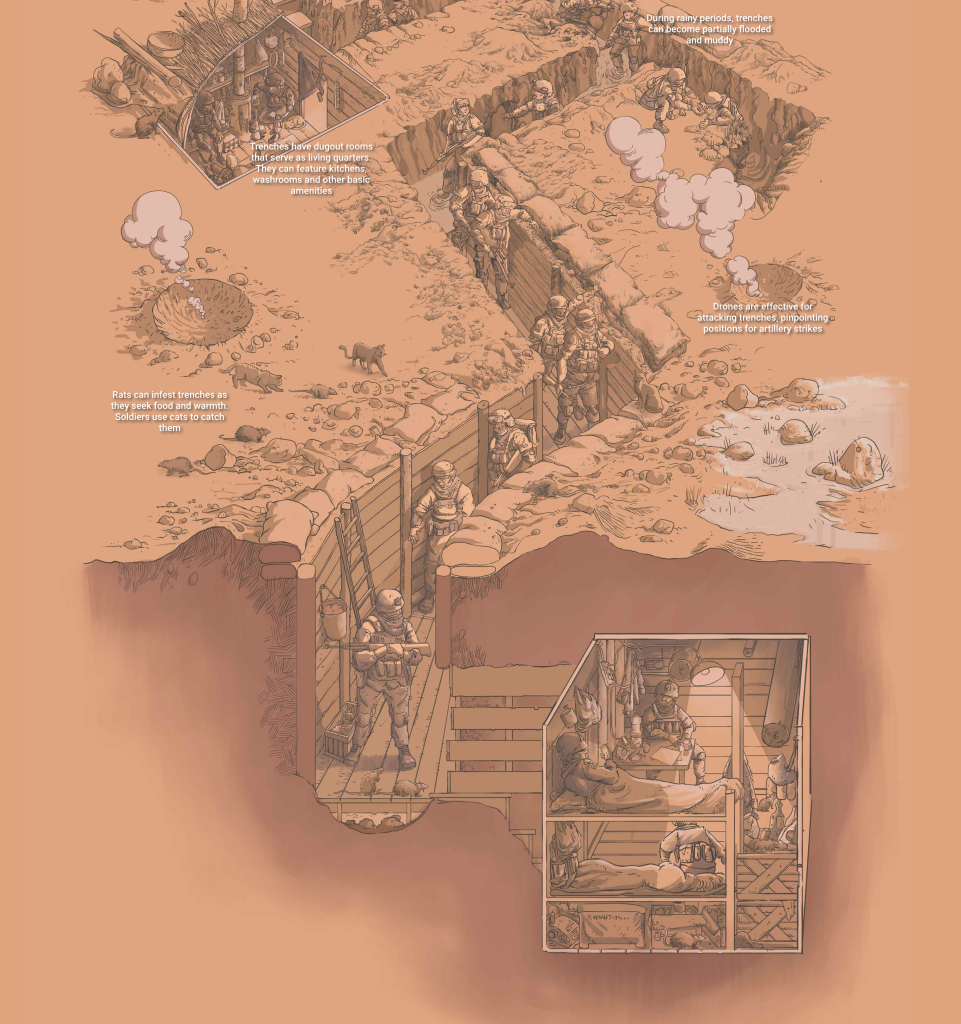
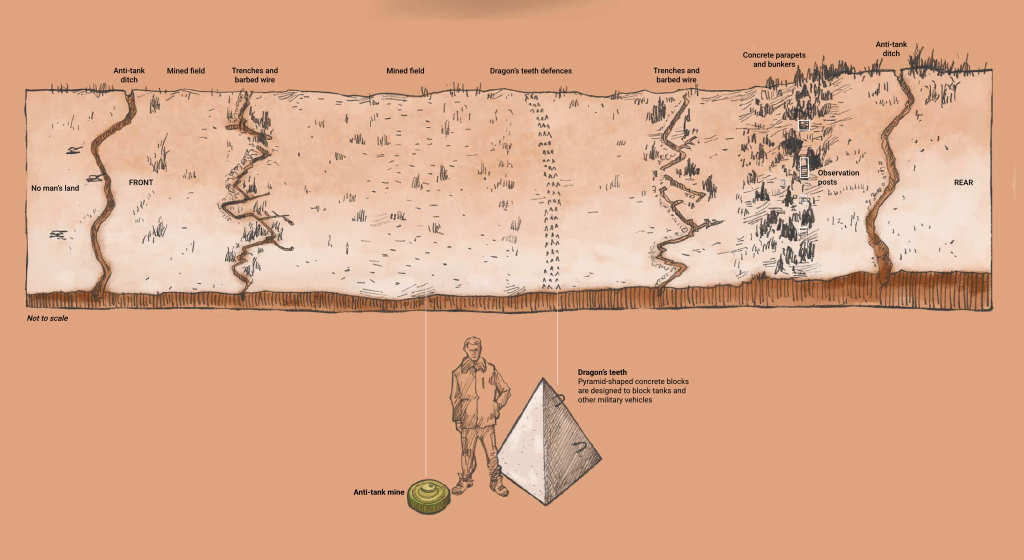
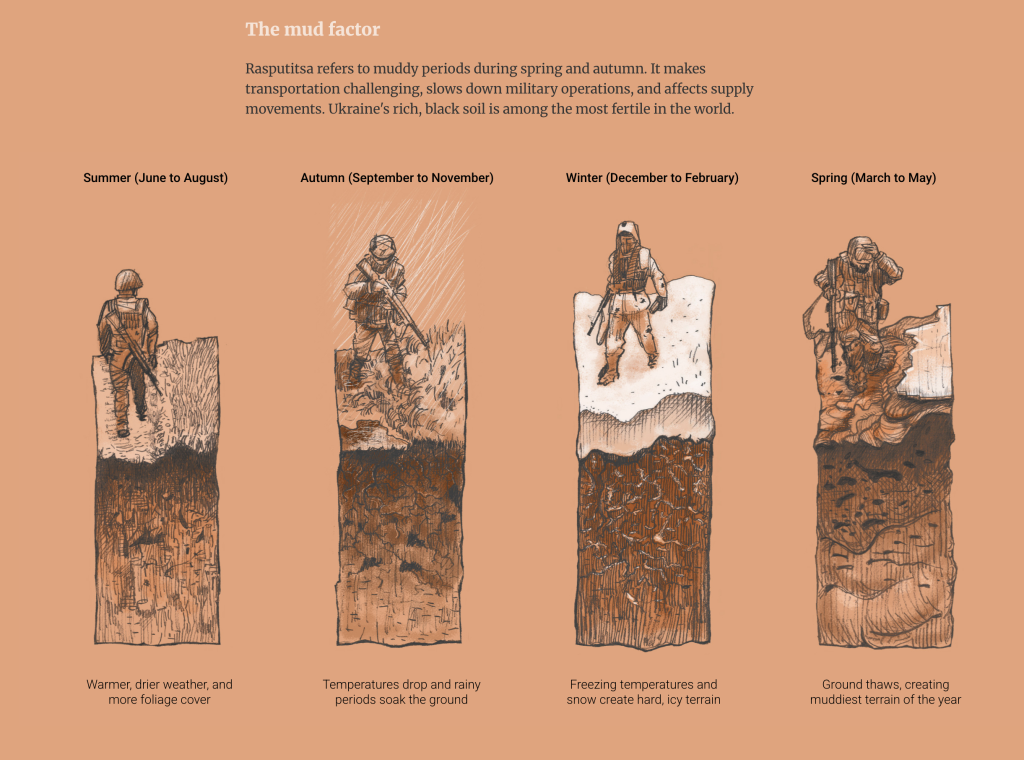
Ukraine Trenches
How does SCMP maintain consistently high standards across both print and digital platforms?
Our quality standards have been consistent for over 15 years, thanks to the foundational work of Simon Scarr, Steve Case, Alberto Lucas, and Adolfo Arranz, and later solidified under Darren Long’s brilliant leadership.
Whether print or digital, we’ve always aimed to deliver strong investigative content and thoughtful visual solutions. Of course, not every piece can be a masterpiece—we also produce content that fulfills its purpose clearly and effectively. This balance is key given our time and resource limitations.
What resonates with audiences is content that genuinely interests them and answers their questions in a logical way. We constantly refine the user experience, and I believe we still have a lot to learn. Continuous testing and debate over even small design details can make a huge difference—especially in engaging today’s highly distracted and visually overwhelmed audiences.
Our goal is always clarity, empathy, and relevance. We strive to provide viewers with visual references that are recognizable, relatable, and easy to interpret.
Was there a particularly challenging or meaningful piece among the awarded entries?
Yes—the story on land grabbing in Hong Kong stood out as particularly complex: Unauthorized Structures: How Land Is Being Taken
Unauthorized Structures: How Land Is Being Taken
It’s a sensitive and controversial topic, requiring the involvement of a wide range of professionals. The piece was based on detailed cartographic work and needed legal advice, as well as insights from architects, engineers, and urban planners. Fieldwork was also essential.
Since the focus was on wealthy individuals illegally expanding their properties onto public land, every diagram and map had to be checked and rechecked. A single error could jeopardize months of investigative work by a multidisciplinary team.
How do you balance creativity with clarity when designing for a diverse, global readership?
Both creativity and clarity have their limits. It’s essential to identify and respect those boundaries. Otherwise, the result might be too obscure or overly personal, making it ineffective.
As mentioned, we allow aesthetic and conceptual experimentation—but never at the cost of comprehensibility. Our work isn’t meant for niche or elite audiences. The more universally understandable a piece is, the stronger its design.
Creativity is not about waiting for inspiration; it emerges during the process—while brainstorming, sketching, conducting interviews, or in the field. I rarely use the terms “art” or “artist” to describe what we do. Those labels can inflate egos and hinder teamwork.
What drives us is curiosity and the desire to explain the unseen and the complex—what’s not immediately obvious. We’re still refining how we present that hidden layer, especially through data visualization. If a graphic is beautiful but incomprehensible, it fails. A simple bar chart may sometimes be more effective than a sophisticated but confusing visual.
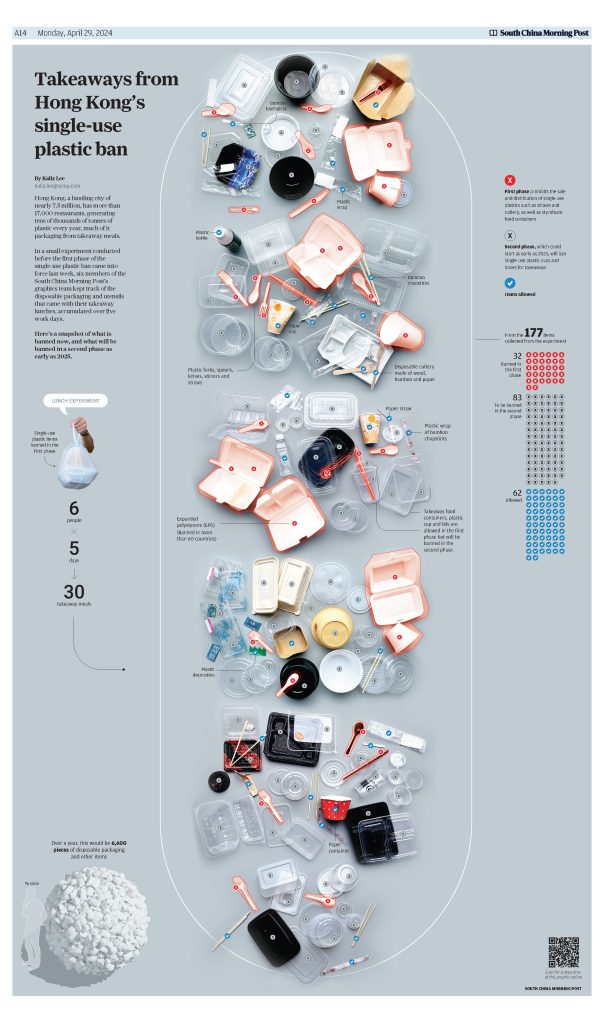
What role does collaboration between editors, designers, developers, and reporters play in your success?
Collaboration is everything. Whether a piece involves two or six people—or a broader newsroom effort—the results always reflect a team’s shared effort and coordination across disciplines.
How do you stay updated with global trends in news design, and how do you apply them locally?
Our team of 10 includes six visual storytellers who work end-to-end on stories. We’re always discussing trends, sharing references, and exploring ideas. Communication is fluid because we genuinely enjoy creating original content.
Five of us are expatriates, each with a different background and approach. Interestingly, we don’t specifically adapt to local contexts—the language of visual storytelling is universal. If it’s clear and accessible, it will resonate with any audience.
Winning so many awards year after year sets a high bar. How do you continue to innovate and push boundaries?
Winning awards isn’t our primary motivation. Competitions vary, with juries bringing different perspectives each year. What motivates us is publishing content that matters—stories that would never exist without deep fieldwork and effort.
Innovation, to us, means improving what’s not working. Audiences want functionality and simplicity. We’re not necessarily inventing anything new—we just keep the user experience at the core of our process. Making the most of our available resources, and being strategic about where we invest time and effort, is key to maintaining our standards.
What advice would you give to young designers or newsrooms aiming for excellence in visual storytelling?
When I began working in newspapers, I never imagined I’d end up creating infographics or visual stories. My focus was initially on aesthetics. But curiosity, versatility, and a drive to create functional design shaped my path.
My fascination with maps and diagrams started in childhood—my parents were teachers, and our home was full of encyclopedias and educational illustrations. I didn’t know then that those images were early forms of infographics.
My advice: stay open to evolving beyond your academic training. A designer can become a content creator—someone who owns the narrative.
I also discourage blindly following trends or copying others. Each newsroom has its own history, challenges, and audience. Focus on the reader—they should always be your priority, not your peers in the industry. Readers will appreciate thoughtful, well-crafted work that connects with their reality.
There are huge disparities in global newsrooms—in resources, press freedom, and publishing models. Many professionals still work in environments with fundamental limitations. That’s why every recognition for visual storytellers is so meaningful. It acknowledges the intense effort behind the scenes
![]()





